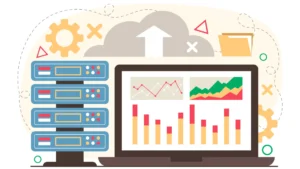When the livelihood of your business depends on data stored in your computer network, you simply cannot afford to leave anything to chance. Data preservation and the ability to retrieve it at any point in time is the foundation of business continuity.
Shocking Facts About Backup Failures
Yet the facts about backup failures are shocking:
- According to the Boston Computing Network, 31% of PC users have lost data due to events “beyond their control.”
- Analysts at the Hughes Marketing Group found that 40% of businesses that experience a critical IT failure go out of business within one year.
- In a recent Gartner study, only 35% of backup tests were successful.
Common Causes of Backup Failures
Some of the more common reasons for backup failures include unintentional formatting of a hard drive, accidental data deletion, malware or virus attack, firmware corruption, natural disasters, logical errors and continued computer operation when the hard drive is starting to fail.
Is Your Backup System Truly Reliable?
So how certain are you that your backup system is 100% reliable? Could a false sense of security be preventing you from taking actions that will insure your backups will really be there when you need them?
7 Ways to Avoid Data Disaster Due To Backup Failure
Without proactive measures in place – and Murphy’s Law being what it is – the odds of a successful restoration when you need it most may not be as great as you’d like to think… So what can you do? Here are seven ways to avoid a damaging loss of data due to backup failure.
1. Insist on regular, remote and redundant processes.
A good rule of thumb is 3-2-1. That means three copies of your data stored in two off-site locations, backed up a minimum of one time per day.
2. Don’t go too cheap on disk drives.
Less expensive arrays that save money by doing without features like redundant power supply and hot spare disks may leave your data at risk.
3. Guard against human error.
Make sure people performing backups and restores know exactly what to do – and what not to do. Take people out of the loop and automate wherever possible. And be especially cautious in situations where backups aren’t a part of someone’s regular duties.
4. Check Backup Software Settings Regularly
When new software or updates are put into service, a change in the way the settings are configured can cause incomplete backups, or backups that fail completely. Do the people who maintain your backups include this on their regular to-do list?
5. Ensure No Files Are Left Out
As resources are added and priorities shift, files and folders can get misplaced or accidentally left off the backup list. Insist on a quarterly or annual meeting with your backup management team to make sure all mission-critical files are included in your organization’s data recovery systems.
6. Address network issues immediately.
Any component in your network that isn’t working properly can introduce another point of failure in your backup process. Every juncture in your network, from a misconfigured switch to a flaky host bus adapter, can hurt your backups.
7. Ask for help with your data backup and recovery system.
You cannot be expected to be an expert in all things. Yet data is the backbone of your business – its protection and recovery should not be left to chance. Why not leverage the knowledge, skill and experience of an expert in the field?
The Importance of Regular Test Restores
Even with all these measures in place, the best way to keep your organization safe from harm due to data loss is to verify your backup system by performing regular test restores. This will help identify any problems in advance so they can be fixed – allowing you to avoid getting hit with an ugly surprise when you least need it.
For a different perspective, read another article on the subject here.
The Smart Way To Assure Backup Success
Unless your team has all the time and expertise required to consistently close all open loops in your backup system, your organization may be at risk of serious harm due to data loss.
Contact us today at 317-857-0150 – before disaster strikes.











